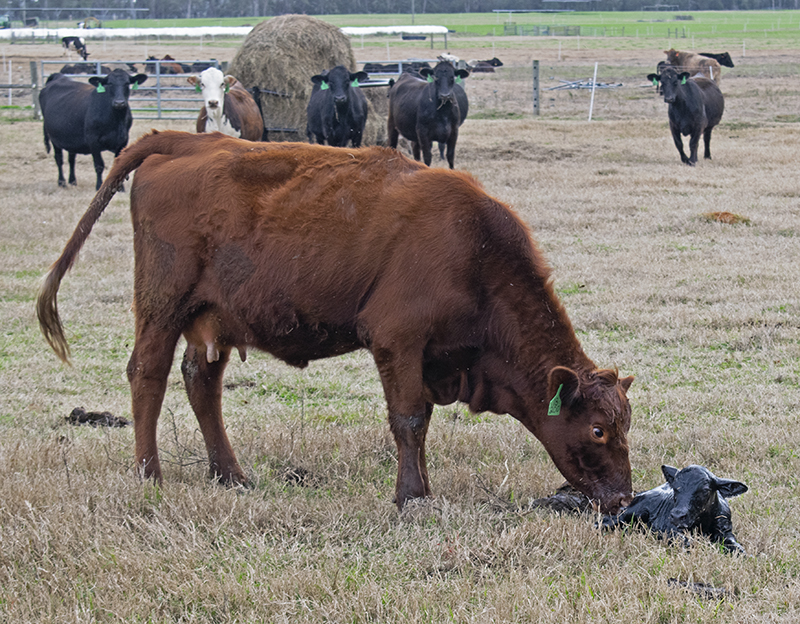Glenn Selk, Oklahoma State University Emeritus Extension Animal Scientist
Despite our best efforts at bull selection and heifer development, cows or heifers occasionally need assistance at calving time. Every baby calf has a certain degree of respiratory acidosis. Acidosis is the result of the deprivation of oxygen and the accumulation of carbon dioxide that results from the passage of the calf through the birth canal. The excess of carbon dioxide results in a build-up of lactic acid (therefore the acidosis). In order to correct the lack of oxygen and the excess of carbon dioxide and its by-products, the healthy calf will pant vigorously shortly after birth. Some calves, however, may be sluggish and slow to begin this corrective process.

It is imperative that the newborn calf begins to breathe as soon as possible. To stimulate the breathing, manually clear the mouth and nasal passages, then briskly tickle the inside of the nostrils of the calf with a straw. Photo credit: Doug Mayo, UF/IFAS
It is imperative that the newborn calf begins to breathe as soon as possible. To stimulate the initiation of the respiratory process, a few ideas may help. First, manually clear the mouth and nasal passages of fluids and mucus. Traditionally, compromised calves were held up by their hind legs to allow fluid to drain from the airways, but now many veterinarians and animal scientists don’t recommend this. Most of the fluid that drains from an upside-down calf is stomach fluid, important to health. Holding the calf by its hind legs also puts pressure on the diaphragm from abdominal organs, interfering with normal breathing. It’s better to use a suction bulb to clear the airways.
Hanging the calf over a fence also is NOT a recommended method for a sluggish newborn. The weight of the calf on the fence restricts the movement of the diaphragm muscle. The fence impairs the diaphragm’s ability to contract and move. This diaphragm activity is necessary to expand the lungs to draw in air and needed oxygen.
A better method is to briskly tickle the inside of the nostrils of the calf with a straw. This will usually cause the calf to have a reflex action such as a “snort” or cough. The reflex cough or “snort” expands the lungs and allows air to enter. Expect the calf to pant rapidly for a few minutes after breathing is initiated. Panting is the natural response that increases oxygen intake and carbon dioxide release and will allow the calf to reach normal blood gas concentrations. Watch the following video of this technique.
- Crop Disaster Assistance for 2025: Is it Coming or Not? - November 21, 2025
- Cotton Marketing News:Much Anticipated November Numbers Include Larger Production and Very Slight Demand Increase - November 21, 2025
- Pierce’s Disease-Resistant Wine Grape Breakthrough Offers Hope for a Florida Wine Renaissance - November 14, 2025
